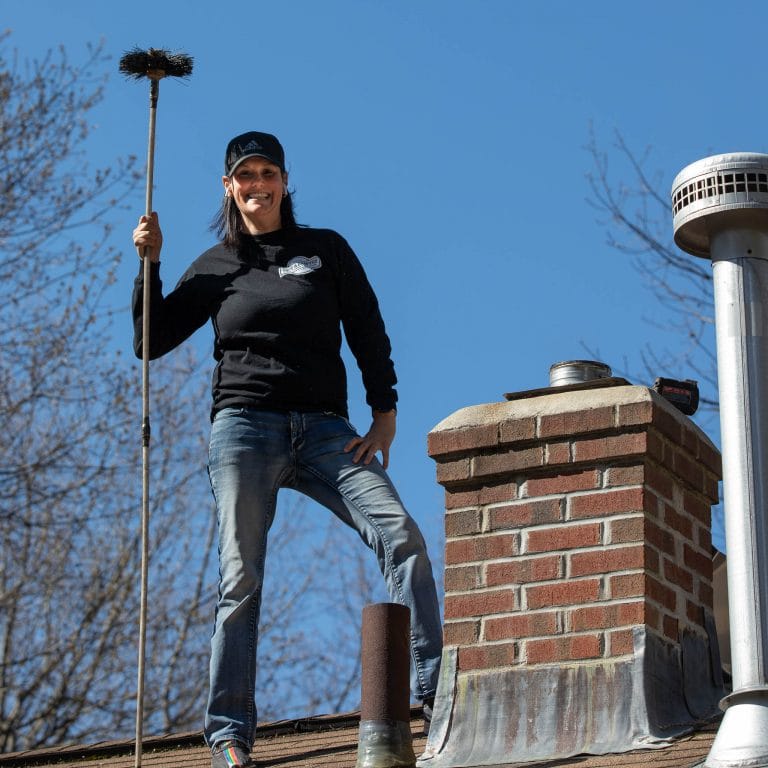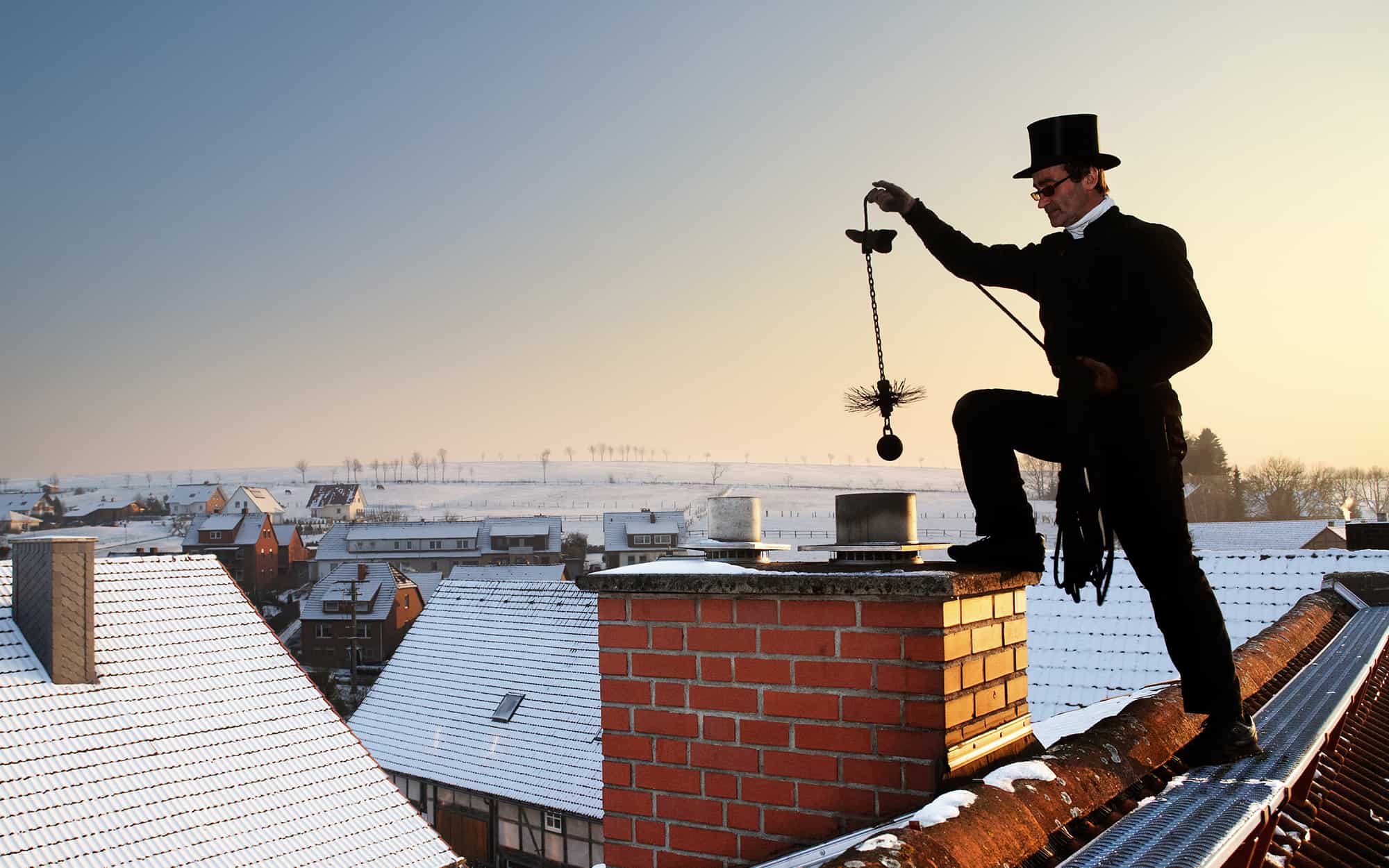Chimney Sweep San Jose Mastery: Specialist Look After Your Fire Place and Hearth
Chimney Sweep San Jose Mastery: Specialist Look After Your Fire Place and Hearth
Blog Article
The Hidden Dangers of Neglecting Chimney Move and Upkeep
Neglecting smokeshaft sweep and maintenance can have severe consequences that are often overlooked by property owners. The covert dangers can vary from chimney fires and poisonous gas launch to architectural damage and carbon monoxide gas poisoning. This is why it is necessary to focus on routine chimney upkeep and sweep solutions.
Smokeshaft fires are an usual threat triggered by the accumulation of combustible creosote within the chimney. These fires can swiftly spread out to the remainder of the residence, leading to ravaging repercussions. Harmful gases, such as carbon monoxide gas, can likewise be launched right into the home if the chimney is not properly kept. This odorless and colorless gas can be exceptionally dangerous, creating disease or also death. Furthermore, neglecting smokeshaft maintenance can cause structural damages, including splits and collapses, jeopardizing the safety and security and stability of the entire home.
By recognizing the hidden dangers and taking positive steps to make certain chimney sweeper and maintenance, homeowners can shield themselves and their families from these prospective dangers.
Smokeshaft Fires
Smokeshaft fires present a significant threat to properties when regular move and upkeep are neglected. The build-up of creosote, an extremely flammable compound, within the chimney can result and fire up in a hazardous fire. When wood or fossil fuels are melted, Creosote is a by-product of incomplete burning and is created. Over time, this substance constructs up on the internal wall surfaces of the smokeshaft, raising the danger of a fire break out.
When a chimney fire takes place, the intense heat can create the flue ceramic tiles to crack or collapse, permitting the fire to infect the surrounding locations of the house. The flames can breach the smokeshaft structure and expand into the wall surfaces or attic room, bring about considerable home damage and possibly threatening the lives of the passengers.
Furthermore, the smoke and poisonous gases produced throughout a chimney fire can pose a significant health and wellness risk. The breathing of these gases, such as carbon monoxide gas, can be deadly. Even if the fire is had within the chimney, smoke can leak right into the space, polluting the air and causing respiratory system problems.
To avoid smokeshaft fires, normal chimney moves and upkeep are necessary. Professional chimney sweeper can get rid of the built-up creosote and examine the smokeshaft for any kind of indicators of damages or obstructions, ensuring that it remains in risk-free functioning problem. Neglecting these preventative measures can result in disastrous effects for homeowners, making smokeshaft discharges a significant risk that must never ever be ignored.
Poisonous Gas Launch

The release of these hazardous gases throughout a chimney fire can have major repercussions. The passengers of the residential or commercial property are at risk of inhaling these harmful gases, which can lead to prompt wellness issues or even fatalities. The architectural honesty of the home can be jeopardized as these gases can corrode metal parts, such as flue linings and chimney caps. This deterioration damages the chimney system, making it more at risk to collapse or additional damage.
To stop the release of poisonous gases throughout a chimney fire, routine smokeshaft upkeep and sweep are vital. By focusing on chimney upkeep and sweep, home owners can reduce the threat of toxic gas release and make certain the safety and security of their occupants and building.
Structural Damages
One of the consequences of overlooking chimney sweeper and upkeep is the potential for considerable structural damage. Gradually, the accumulation of creosote, debris, and other compounds in the chimney can cause different concerns that compromise the architectural honesty of the whole system.
Among the main concerns is the formation of chimney fires. When creosote, a very combustible material, accumulates inside the chimney, it can fire up and result in a fire that can rapidly spread to the rest of the home. The extreme warm produced by these fires can cause severe damages to the chimney's masonry, leading to splits, collapsing mortar, and even the collapse of the smokeshaft itself.
Furthermore, neglecting smokeshaft upkeep can lead to moisture infiltration. Leakages or fractures in the chimney can enable water to get in, bring about water damages and degeneration of the chimney's structure. Over time, this can compromise the blocks, mortar, and various other materials, creating them to damage down and possibly collapse.
Additionally, the presence of pets and pests in neglected smokeshafts can additionally add to structural damages. Chimney Sweep San Jose. Animals such as squirrels and birds can develop nests and leave behind particles that blocks the smokeshaft and stops appropriate ventilation. This clog can result in a buildup of hazardous gases, decreased performance, and also structural collapse
Carbon Monoxide Gas Poisoning
Carbon monoxide poisoning is a possible threat that can occur from ignoring chimney move and upkeep. When a smokeshaft is not properly preserved or brushed up frequently, it can come to be obstructed or blocked, preventing the proper air flow of CO.
Symptoms of carbon monoxide poisoning check here include headaches, dizziness, trouble, complication, and queasiness breathing. Infants, the senior, and people with pre-existing breathing conditions are specifically prone to the results of carbon monoxide poisoning.
Regular smokeshaft sweep and upkeep are necessary to stop carbon monoxide gas poisoning. An expert chimney move can eliminate any clogs or obstructions, guaranteeing that carbon monoxide can securely leave the home. Furthermore, regular inspections can recognize any type of potential problems or damages to the smokeshaft that might contribute to carbon monoxide buildup.
To secure yourself and your family from the threats of carbon monoxide gas poisoning, it is essential to prioritize smokeshaft sweep and maintenance. By doing so, you can preserve a healthy and balanced and risk-free living environment.
Creosote Accumulation
1. A significant worry related to ignoring chimney sweeper and maintenance is the buildup of creosote. Creosote is a black, tar-like substance that develops when timber or nonrenewable fuel sources are burned. It is extremely combustible and can position significant risks to both the smokeshaft and the home otherwise correctly addressed.
Creosote build-up occurs when the byproducts of combustion, such as smoke, gases, and bits, cool and condense on the inner wall surfaces of the chimney (Chimney Sweep San Jose). In time, this sticky deposit can gather and harden, creating a thick layer that restricts airflow and enhances the danger of chimney fires
Among the major threats of creosote build-up is the possibility for a smokeshaft fire. Creosote is extremely flammable and can stir up at high temperature levels. Once ignited, it can burn at an extreme warmth, possibly creating substantial damages to the chimney structure and infecting other parts of the home.
Along with the threat of fire, creosote build-up click for source can also lead to poor chimney performance. As the layer of creosote thickens, it can obstruct the flue, decreasing the air flow and protecting against correct ventilation. This can trigger smoke to support into the home, resulting in breathing issues and carbon monoxide poisoning.

Verdict
To conclude, neglecting chimney sweeper and upkeep can bring about significant consequences. Chimney fires can trigger considerable damages to the framework and placed lives at threat. Poisonous gas release and carbon monoxide poisoning can lead to serious health and wellness risks. In addition, the build-up of creosote can even more enhance the risk of chimney fires. For that reason, regular chimney maintenance is important to guarantee the security and health of people and their residential or commercial property.
Smokeshaft fires try here are a common threat triggered by the accumulation of flammable creosote within the smokeshaft.To prevent chimney fires, routine chimney sweeps and maintenance are essential. Specialist chimney moves can eliminate the built-up creosote and examine the chimney for any type of indicators of damage or clogs, making certain that it is in risk-free working condition.To protect against the release of poisonous gases during a smokeshaft fire, routine chimney maintenance and sweep are important. The intense warmth produced by these fires can cause serious damages to the chimney's masonry, leading to splits, crumbling mortar, and also the collapse of the chimney itself.
Report this page